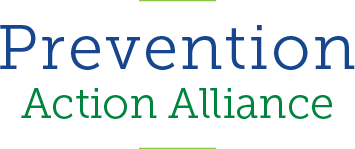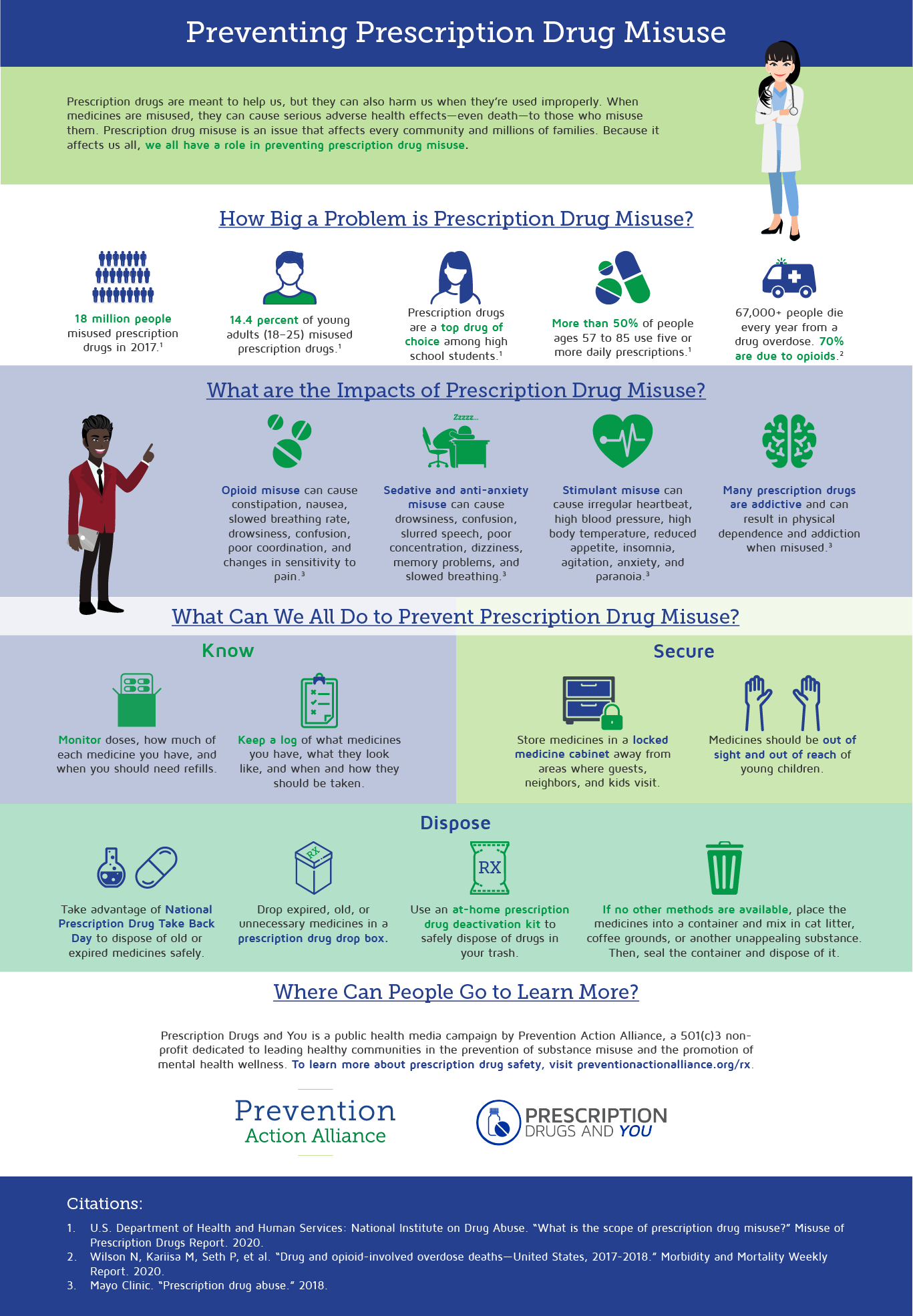
Prescription drugs are meant to help us, but they can harm ourselves, our loved ones, and our communities when they’re misused. In fact, they can be just as dangerous as illicit drugs when they’re misused. To prevent the misuse of prescription drugs and to keep all our families and communities safe, follow three, simple steps: know, secure, dispose.
Know
The first step in prescription drug safety is to know about the medicine that’s in your home.
Keep track of which medicines are in your house, how many doses you have of each medicine, and when and how often you need to get refills on any prescriptions. If you’re getting refills more often than expected, it could be a sign of misuse in the home. If you have children, even teenagers, in the home, control their medication use and monitor doses and refills. Be sure to track the name, dosage, and appearance of the medicine as well as how it is taken, who takes it and why, and how often and when it’s taken.
Before visiting the doctor or pharmacist, write down questions you have about your medicine. Here are a few sample questions you may ask:
- What are the side effects of this medicine?
- Is this drug addictive?
- How might this medicine interact with my other medicines?
- Are there alternatives to this medicine I could consider?
- What warning signs of adverse reactions should I watch for?
Secure
Nine out of ten poisonings of children 12 years old and younger involve medicine, according to Prevent Child Injury. And, according to the American Society for the Prevention of Cruelty to Animals, medicine is the most likely toxin to poison pets at home. For many, prescription drug abuse starts in the teen years at the home medicine cabinet. According to the Drug Enforcement Administration, 17.8 percent of high school students misused prescription drugs.
Clearly, the prescription drugs that come into our homes can be dangerous to our loved ones. That’s why it’s vital that medicine be stored appropriately and that children learn to respect prescription drugs.
Safely storing medicine means that it’s:
- Out of reach and out of sight of young children.
- In a medicine cabinet. Don’t leave medicine on the counter or on a table for children or pets to get.
- Preferably, in a locked cabinet not easily accessible by children, neighbors, or guests to prevent others from misusing medicine.
It’s also best to make sure everyone in your house knows the phone numbers for poison control (1-800-222-1222) and the ASPCA Animal Poison Control Center (1-888-426-4435).
Dispose
Old, expired, or no longer necessary medicine can represent a health risk at home, but many people don’t know how to get rid of them. Fortunately, there are multiple ways to get rid of these medicines, and doing so keeps families, communities, and the environment safe.
- Take advantage of National Prescription Drug Take Back Day or local take back days to safely dispose of medicine.
- Use a prescription drug drop box.
- Use an at-home prescription drug deactivation pouch to deactivate the drugs and then throw them away in the trash.
- If no other methods are available, the U.S. Food and Drug Administration recommends mixing the medicine with an unappealing substance, like cat litter or coffee grounds, placing them into a sealed container, and throwing the container into the trash.
- Remember to black out any personal information on prescription medicine bottles to protect your identity and privacy.

